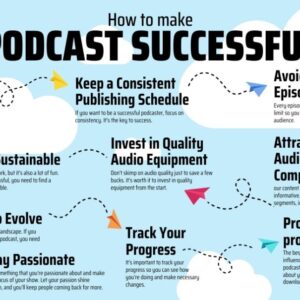
Outline:

1: How to Manage Your Finances When You Are Self-Employed
2: How to Manage Your Finances When You Are Self-Employed – The Unique Challenges of Self-Employment
- Understanding the Financial Landscape of Self-Employment
- Why Financial Management is Crucial for Self-Employed Individuals
- The Common Pitfalls of Self-Employment Finances
3: Setting Up the Right Financial Systems for Your Business
- Opening a Business Bank Account
- Using Accounting Software to Track Expenses and Income
- Keeping Personal and Business Finances Separate
4: Creating a Realistic Budget for Self-Employed Individuals
- Estimating Your Monthly Income as a Freelancer or Entrepreneur
- Categorizing Your Expenses and Business Costs
- Building a Personal Budget While Accounting for Business Expenses
5: The Importance of Saving for Taxes
- Understanding Your Tax Responsibilities as a Self-Employed Person
- Setting Aside Money for Taxes Throughout the Year
- Working with a Tax Professional to Ensure Proper Filing
6: Managing Cash Flow Effectively
- How to Maintain a Positive Cash Flow in Fluctuating Markets
- Strategies for Dealing with Late Payments and Clients Who Don’t Pay
- Using Invoicing Systems and Payment Platforms for Faster Payments
7: Setting Financial Goals and Tracking Progress
- How to Set Realistic Financial Goals for Your Business
- Tracking Your Progress and Adjusting Goals When Needed
- The Role of Financial Dashboards and Tools for Self-Employed Individuals
8: How to Build an Emergency Fund as a Self-Employed Individual
- The Importance of an Emergency Fund for Business Owners
- How Much Should You Save for Emergencies?
- Where to Keep Your Emergency Fund for Quick Access
9: Retirement Planning for Self-Employed Individuals
- Retirement Options for Self-Employed People: IRAs and 401(k)s
- Contributing to Your Retirement Fund Consistently
- The Benefits of Starting Early for Retirement
10: Paying Yourself as a Freelancer or Entrepreneur
- How to Pay Yourself a Salary from Your Business
- Balancing Your Business and Personal Finances
- Strategies for Drawing Income Without Overextending Yourself
11: Dealing with Debt as a Self-Employed Person
- Managing Business and Personal Debt Simultaneously
- The Snowball vs. Avalanche Method for Paying Down Debt
- When to Seek Professional Help for Managing Debt
12: Understanding Business Expenses and Tax Deductions
- Identifying Deductible Business Expenses
- Keeping Track of Receipts and Documentation
- How to Maximize Deductions for Your Business
13: Building Business Credit and Securing Funding
- Why Business Credit is Important for Entrepreneurs
- How to Build Business Credit from Scratch
- Applying for Loans and Credit Lines as a Self-Employed Person
14: Using Financial Apps and Tools for Self-Employed Individuals
- The Best Financial Apps for Freelancers and Entrepreneurs
- Automating Your Finances and Payments
- Using Budgeting Tools to Stay on Track
15: The Importance of Continuous Financial Education
- Keeping Up with Tax Laws and Business Regulations
- Learning More About Investment Strategies and Financial Planning
- Joining Self-Employed Communities for Financial Insights
16: Real-Life Success Stories of Self-Employed Individuals Who Mastered Their Finances
- Case Study 1: How One Freelancer Took Control of Her Finances
- Case Study 2: How a Small Business Owner Successfully Managed Cash Flow
- Case Study 3: The Journey of an Entrepreneur Who Saved for Retirement Early
17: Final Thoughts: How to Manage Your Finances for Long-Term Success as a Self-Employed Individual
FAQs
- How can I estimate my income as a self-employed person?
- What are the best tools for budgeting as a freelancer?
- How do I set aside money for taxes as a self-employed individual?
- How can I pay myself from my business without affecting cash flow?
- What are the best retirement plans for self-employed people?
How to Manage Your Finances When You Are Self-Employed: Powerful Tips for Financial Freedom and Success

Being self-employed gives you the freedom to be your own boss and follow your entrepreneurial dreams. But with that freedom comes the responsibility of managing your finances, which can often feel overwhelming. From fluctuating income to tax obligations, handling finances as a self-employed person can be tricky — but it doesn’t have to be. With the right strategies and tools, you can easily navigate the complexities of self-employment and build a financially secure future.
In this article, we’ll explore **how to manage your finances when you are self-employed** and provide you with practical tips to make your financial journey easier and more successful. From setting up solid financial systems to planning for taxes and retirement, these strategies will help you take control of your finances and set your business up for long-term success.
Understanding the Financial Landscape of Self-Employment
Self-employment offers incredible flexibility, but it also brings unique financial challenges. Unlike salaried employees, self-employed individuals don’t have predictable income or automatic tax deductions from their paychecks. Managing finances in such an environment requires planning, organization, and discipline.
In addition to dealing with varying income, you’re also responsible for paying your own taxes, saving for retirement, and covering business expenses — all while ensuring that you have enough funds to pay yourself. The good news is that once you understand the financial landscape, you can make strategic decisions to keep your finances in check and your business thriving.
Why Financial Management is Crucial for Self-Employed Individuals
Effective financial management is vital for self-employed individuals, as it directly impacts the sustainability and growth of your business. Without a solid financial plan, you risk falling into debt, missing tax payments, or failing to save for the future. By creating a clear financial strategy and using the right tools, you can ensure that your business stays financially healthy and that you’re building wealth over time.
The Common Pitfalls of Self-Employment Finances
Some common financial pitfalls for self-employed individuals include:
Mismanaging cash flow due to fluctuating income.
Overestimating business expenses, leading to under-budgeting.
Failing to save for taxes, which can result in penalties.
Neglecting retirement savings because of an unpredictable income.
Recognizing these challenges early on can help you avoid these pitfalls and make more informed financial decisions.
READ MORE: Saving-money-on-health-insurance-costs
Setting Up the Right Financial Systems for Your Business
Opening a Business Bank Account
One of the first steps in managing your finances as a self-employed individual is to open a business bank account. Keeping your personal and business finances separate is crucial for tracking business expenses, calculating profits, and simplifying tax reporting. A dedicated business account also helps to maintain financial transparency and ensure that you’re not mixing personal and business funds.
Using Accounting Software to Track Expenses and Income
Investing in accounting software like QuickBooks, FreshBooks, or Xero can save you time and prevent errors. These tools allow you to track income, categorize expenses, and generate financial reports that make tax filing easier. Automating your accounting system helps you stay organized and ensures that nothing slips through the cracks.
Keeping Personal and Business Finances Separate
It’s important to keep your personal and business finances separate to avoid confusion and make it easier to track your business performance. This will also help when filing your taxes, as you’ll have clear records of business-related expenses and income.
Creating a Realistic Budget for Self-Employed Individuals
Estimating Your Monthly Income as a Freelancer or Entrepreneur
As a self-employed person, your income can fluctuate from month to month, which makes budgeting a bit more complex. Start by tracking your income for a few months to determine an average. You can also estimate your monthly income based on projects you’re currently working on or recurring clients.
Categorizing Your Expenses and Business Costs
Make sure to categorize all your business-related expenses, including office supplies, software, marketing, and any other costs required to run your business. This will help you better understand where your money is going and identify potential areas for cost-cutting.
Building a Personal Budget While Accounting for Business Expenses
In addition to tracking your business expenses, it’s also essential to create a personal budget. Factor in both your personal living expenses (e.g., rent, utilities, groceries) and your business costs to ensure that you’re able to meet both your personal and professional financial obligations.
The Importance of Saving for Taxes
Understanding Your Tax Responsibilities as a Self-Employed Person
As a self-employed individual, you are responsible for paying both income tax and self-employment tax. Unlike traditional employees, taxes aren’t automatically deducted from your paycheck. It’s crucial to set aside money regularly for your tax obligations to avoid a large, unexpected bill at the end of the year.
Setting Aside Money for Taxes Throughout the Year
A general rule of thumb is to set aside 25-30% of your income for taxes. You can either do this monthly or quarterly, depending on your preference. Having a dedicated tax savings account will ensure that you have the money when it’s time to file your taxes.
Working with a Tax Professional to Ensure Proper Filing
Consider hiring a tax professional to help you navigate self-employment taxes and take advantage of available deductions. A professional can also help you make quarterly payments to avoid penalties at tax time.
Managing Cash Flow Effectively
How to Maintain a Positive Cash Flow in Fluctuating Markets
Self-employed individuals often experience inconsistent income. To manage cash flow effectively, it’s essential to have a financial cushion and set aside extra funds during high-income months. This will help you cover expenses during leaner months and keep your business running smoothly.
Strategies for Dealing with Late Payments and Clients Who Don’t Pay
Late payments from clients can create cash flow problems. To mitigate this risk, set clear payment terms upfront, send timely reminders, and consider using invoicing platforms that automate payment requests.
Using Invoicing Systems and Payment Platforms for Faster Payments
Platforms like FreshBooks and PayPal make it easy to send professional invoices and receive payments quickly. Using online payment options can reduce delays and help you get paid faster.
Setting Financial Goals and Tracking Progress
How to Set Realistic Financial Goals for Your Business
Setting financial goals is key to ensuring your business stays on track. Break down your long-term goals into smaller, achievable steps. Whether it’s reaching a certain revenue goal, saving for expansion, or reducing debt, setting clear financial objectives will guide your decision-making.
Tracking Your Progress and Adjusting Goals When Needed
Use financial tools or dashboards to track your progress toward your goals. If things aren’t going according to plan, adjust your budget or strategies to get back on track. Financial flexibility is essential when you’re self-employed.
The Role of Financial Dashboards and Tools for Self-Employed Individuals
Financial dashboards can help you visualize your business’s financial health. Many accounting tools offer this feature, which gives you a snapshot of income, expenses, and savings in one place.
How to Build an Emergency Fund as a Self-Employed Individual
The Importance of an Emergency Fund for Business Owners
An emergency fund is your safety net. It helps protect you from unexpected expenses, whether it’s a personal emergency or a downturn in business. Having an emergency fund ensures that you won’t be financially vulnerable in case of unforeseen events.
How Much Should You Save for Emergencies?
Aim to save at least 3-6 months’ worth of personal and business expenses. This will allow you to continue operating your business without the stress of relying on loans or credit cards in an emergency.
Where to Keep Your Emergency Fund for Quick Access
Keep your emergency fund in a high-yield savings account or a money market account, where you can access it quickly and earn interest on your balance.
Retirement Planning for Self-Employed Individuals
Retirement Options for Self-Employed People: IRAs and 401(k)s
As a self-employed individual, you don’t have access to employer-sponsored retirement plans. However, you can set up an Individual Retirement Account (IRA) or Solo 401(k) to save for the future with tax advantages.
Contributing to Your Retirement Fund Consistently
Set up automatic contributions to your retirement account. The earlier you start, the more your money can grow with compound interest. Consistency is key.
The Benefits of Starting Early for Retirement
Starting early allows you to take advantage of tax-deferred growth and compound interest, maximizing your savings over time.
Paying Yourself as a Freelancer or Entrepreneur
How to Pay Yourself a Salary from Your Business
Paying yourself consistently is important for managing personal expenses and budgeting. Set up a payment system that works with your business cash flow, ensuring you have enough to cover your personal expenses.
Balancing Your Business and Personal Finances
Keep your personal and business finances separate to avoid confusion. Track your business income and expenses separately from your personal budget.
Strategies for Drawing Income Without Overextending Yourself
Only pay yourself what your business can afford. If your income is unpredictable, set aside extra funds during high-revenue months to cover lean periods.
Dealing with Debt as a Self-Employed Person
Managing Business and Personal Debt Simultaneously
It’s important to manage both business and personal debt responsibly. Consider using the debt snowball method for personal debt, where you pay off the smallest debt first, or the avalanche method for high-interest debt.
The Snowball vs. Avalanche Method for Paying Down Debt
Both methods are effective for paying down debt. Choose the one that best fits your financial situation.
When to Seek Professional Help for Managing Debt
If your debt becomes overwhelming, consider seeking help from a financial advisor or credit counselor to create a repayment plan.
Conclusion
How to Manage Your Finances for Long-Term Success as a Self-Employed Individual
Successfully managing your finances as a self-employed individual involves careful planning, organization, and discipline. By understanding your income and expenses, saving for taxes, building an emergency fund, and planning for retirement, you can ensure your financial success. The tips and strategies outlined in this guide will help you navigate the challenges of self-employment and set yourself up for long-term financial health and business growth.
FAQs
1.How can I estimate my income as a self-employed person?
Track your monthly income over time to get an average. You can also use your project pipeline to estimate future income.
2. What are the best tools for budgeting as a freelancer?
A: Tools like QuickBooks, Mint, and FreshBooks are great for managing both business and personal finances.
3. How do I set aside money for taxes as a self-employed individual?
A: Set aside 25-30% of your income each month and deposit it into a separate savings account for tax payments.
4. How can I pay myself from my business without affecting cash flow?
A: Pay yourself a fixed salary based on your business’s cash flow and reserve extra funds for months with lower income.
5. What are the best retirement plans for self-employed people?
A: IRAs and Solo 401(k)s are excellent options, offering tax advantages while helping you save for retirement.






